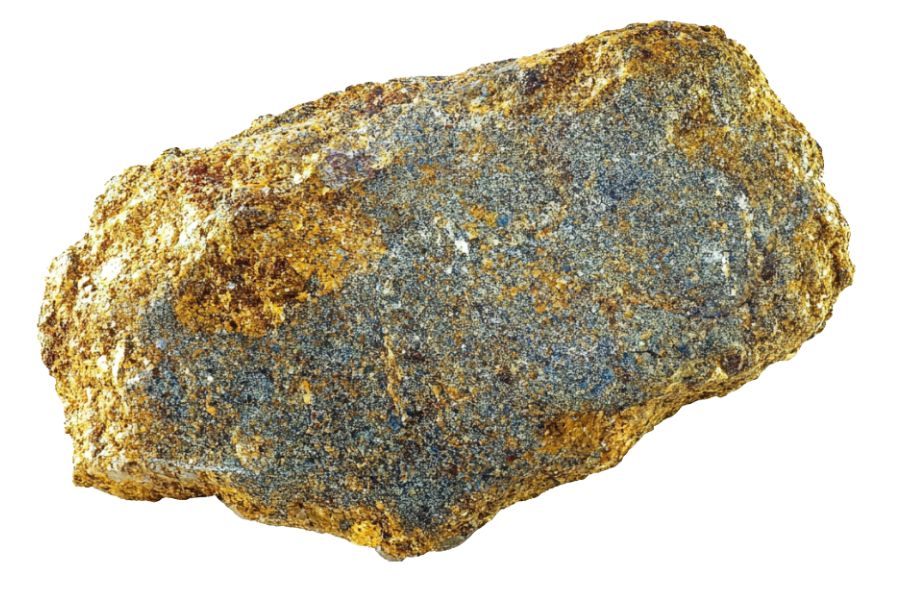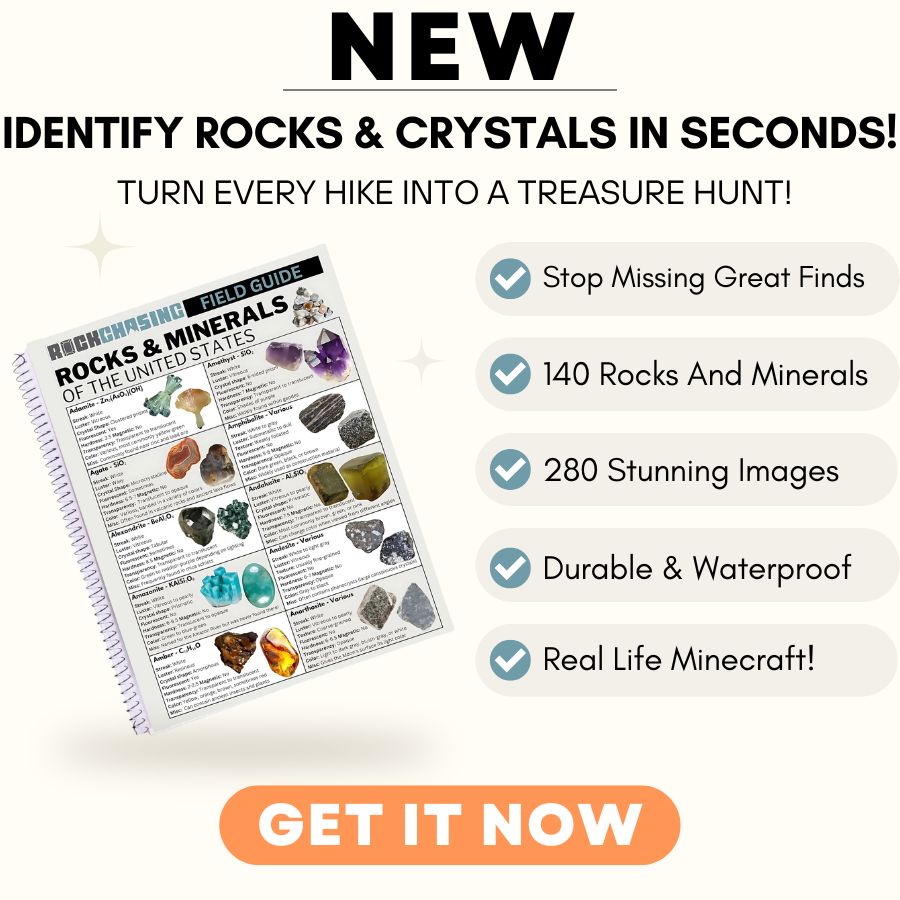New York has some of the best pyrite specimens in the country. In the right spots, you can find sharp, golden cubes that almost look like they were cut by a machine.
Some locations even have pyrite crystals with a mirror-like shine. But many rockhounds miss out simply because they search in the wrong places.
It’s easy to waste hours digging in the wrong spot. Some locations are picked clean, while others never had good pyrite to begin with. That’s why knowing where to look is key.
To save you time and effort, we’ve gathered the best places in New York to find quality pyrite. Whether you’re a beginner or an experienced collector, these spots will give you the best chance of uncovering stunning specimens.
How Pyrite Forms Here
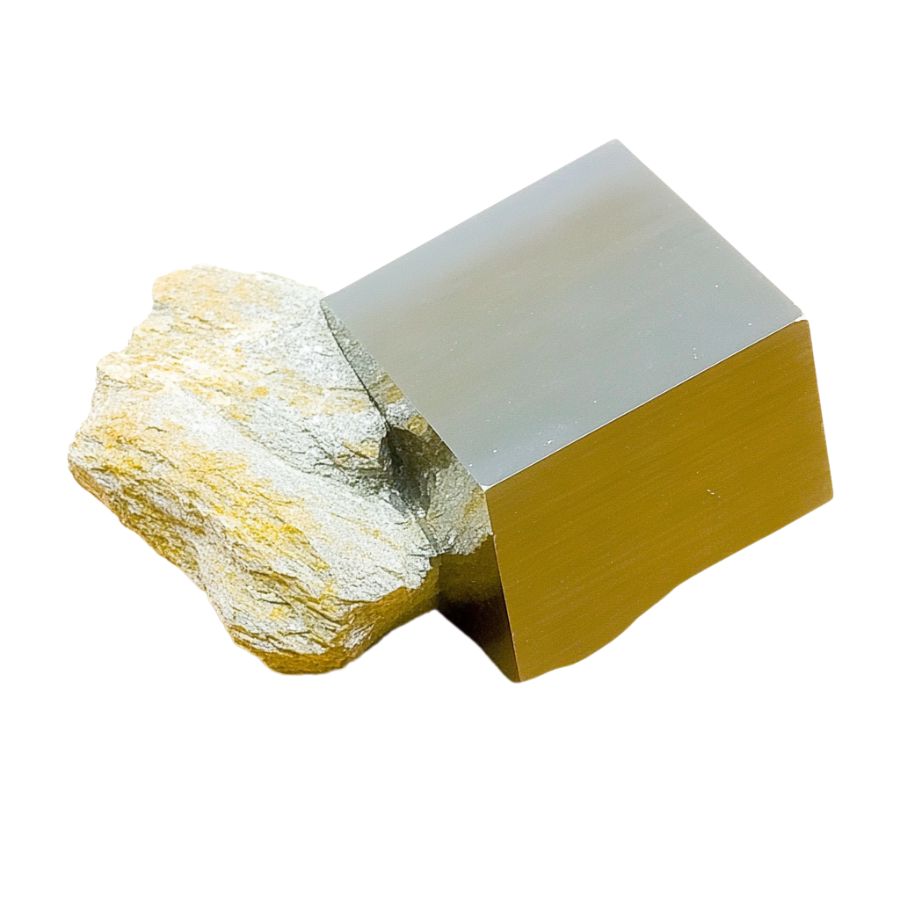
Pyrite forms when iron and sulfur combine in oxygen-poor environments, like deep in ancient seas or swamps.
The magic happens when iron-rich water meets sulfur-producing bacteria – these tiny organisms actually help create the perfect conditions for pyrite to grow!
As the bacteria break down organic matter, they release sulfur, which quickly bonds with the iron. Over time, these elements crystallize into pyrite’s distinctive cubic shapes at fairly low temperatures.
Sometimes, it forms slowly, replacing dead plants or sea creatures bit by bit, preserving their shapes as perfect golden fossils. The more pressure and heat, the bigger and more perfect the crystals become.
Types of Pyrite
Pyrite comes in several distinct forms and shapes, each with its own unique characteristics. Knowing these different varieties will help you identify what you’ve found.
Cubic Pyrite
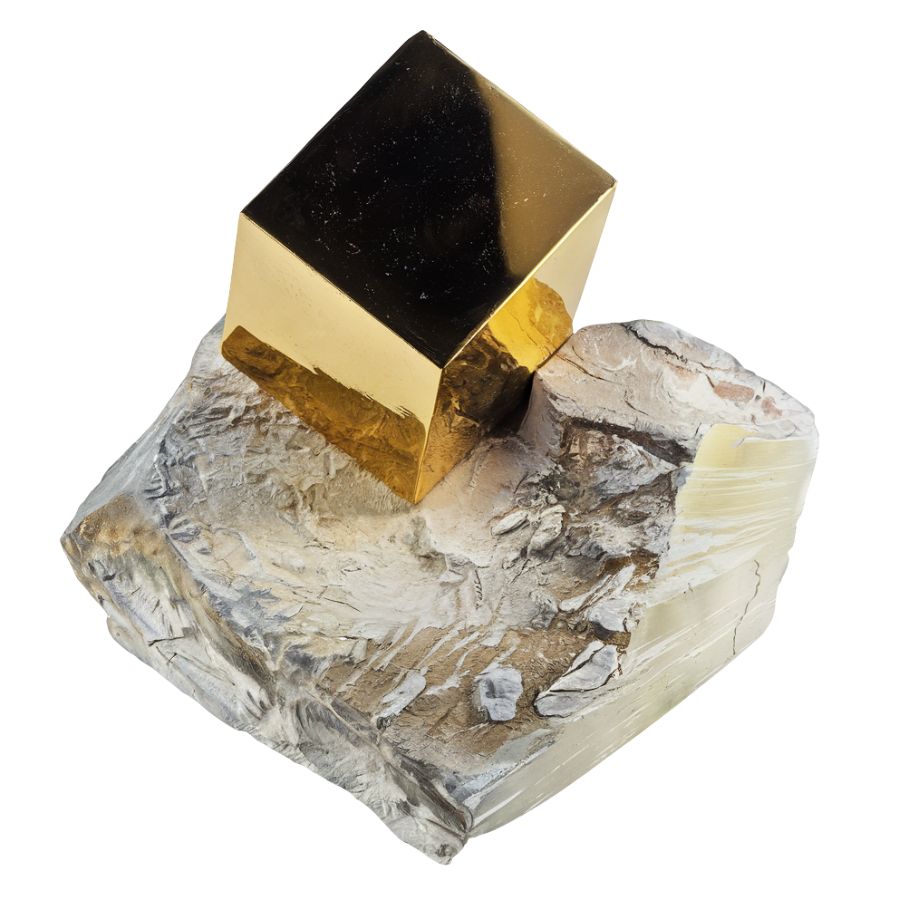
Cubic Pyrite showcases perfect cube-shaped crystals with sharp, well-defined edges and corners. While the classic form is golden, Cubic Pyrite can also appear in shades of brown or green.
What’s fascinating about Cubic Pyrite is how the crystals often cluster together, creating stunning geometric patterns. Sometimes, smaller cubes grow on larger ones, forming complex arrangements that collectors particularly value.
These specimens often develop alongside other minerals, which can create striking contrast effects.
Some pieces display interesting growth patterns where cubes appear to be stacked or intergrown with each other, creating unique architectural-like formations that make each specimen special.
Cathedral Pyrite
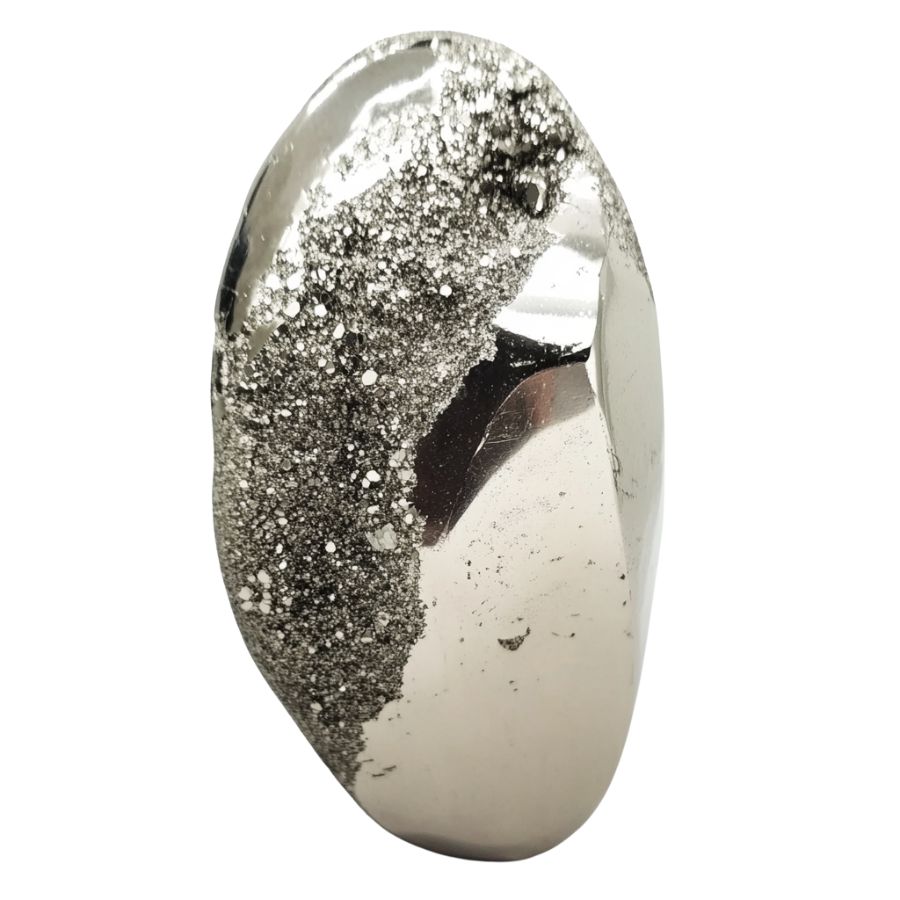
Cathedral Pyrite displays intricate surface patterns that look like delicate etchings or gothic window designs. The surface typically shows a bright, metallic luster that enhances these unique patterns.
It exhibits a combination of cubic and modified dodecahedral forms, which contribute to its unique appearance.
The crystal’s surface features result from natural etching processes during formation. This creates deeper grooves and raised areas that form symmetrical patterns.
Most specimens show variations in the depth and complexity of their etchings. Some areas might have fine, detailed patterns while others show broader, more pronounced features.
Pyrite Sun

Pyrite Sun forms in flat, disc-shaped specimens with radiating patterns that spread from the center outward. These pieces look like metallic sunbursts, with lines extending in all directions.
The radiating pattern is actually made up of countless tiny crystals arranged in a circular formation. This arrangement creates a natural symmetry that makes each piece look like a golden medallion or ancient sun symbol.
These specimens sometimes develop with interesting surface textures. Some pieces show subtle ridges along the radiating lines, while others might have a slightly bumpy texture.
The flat shape of the Pyrite Sun makes it distinctly different from other pyrite formations.
Pyritohedral Pyrite
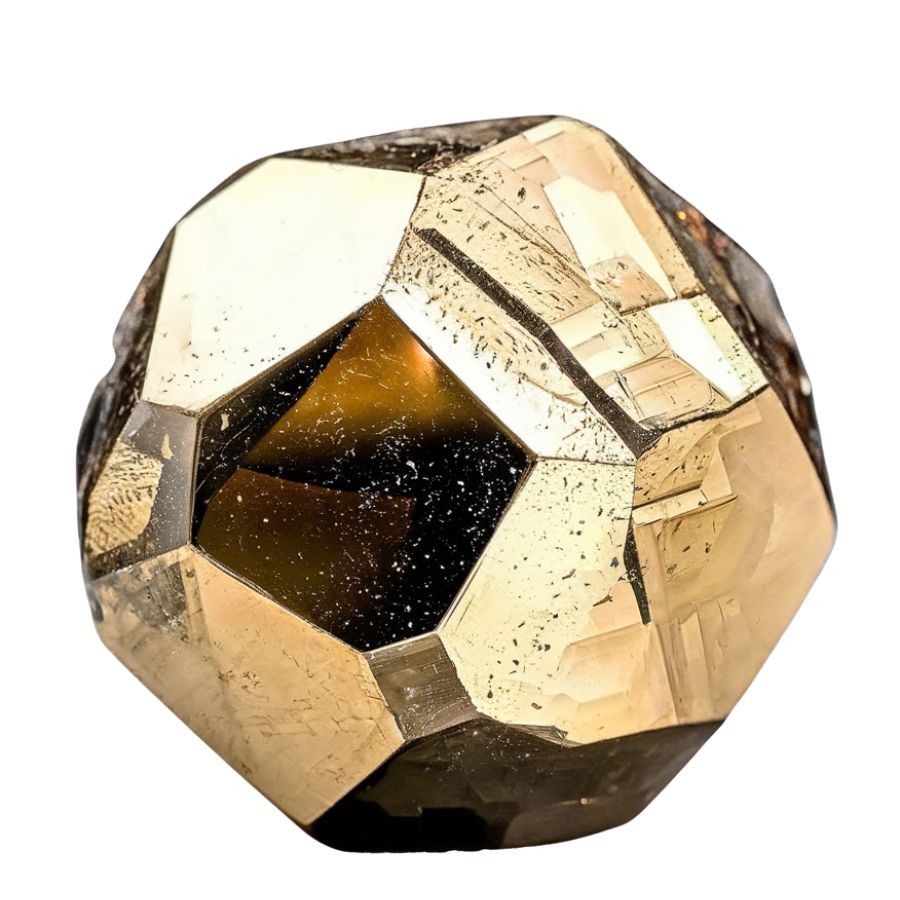
Pyritohedral Pyrite forms in unique twelve-sided shapes called pentagonal dodecahedra. Each face is a perfect pentagon. The crystals show the same bright, metallic golden color typical of pyrite, but in this distinctive shape.
Large single crystals of Pyritohedral Pyrite are particularly impressive. They can form either as individual crystals or in groups, sometimes creating interesting clusters where multiple dodecahedral shapes grow together.
One of the unique aspects of pyritohedral pyrite is its crystallography, which shows striated surfaces conforming to its pyritohedral symmetry.
Additionally, pyrite can form complex intergrowths known as framboids, which resemble raspberry-like clusters, adding to its visual appeal.
Rainbow Pyrite
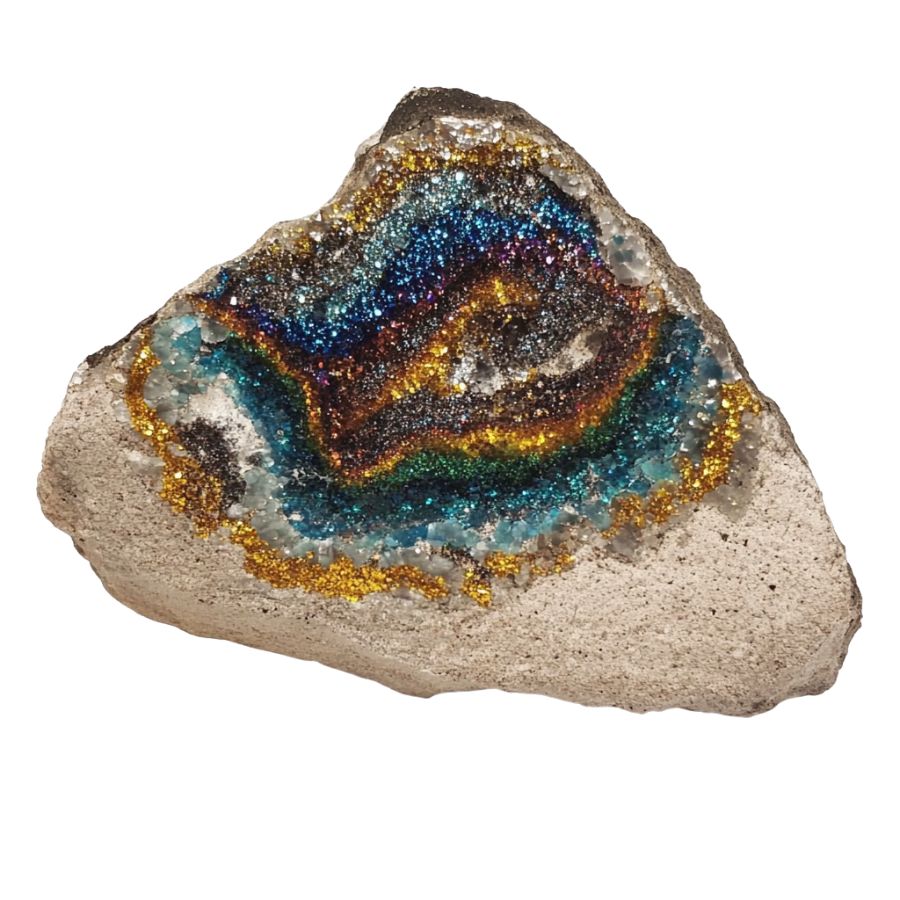
Rainbow Pyrite displays stunning iridescent colors that shimmer across its surface. These colors range from bright blues and greens to purples and pinks, creating a peacock-like effect. The colors change and shift as you move the stone, making each viewing angle unique.
The iridescent effect comes from a thin layer of oxidation on the surface. The base crystal usually maintains its metallic shine underneath these colorful patterns.
The intensity of colors varies between specimens, with some showing bold, vivid hues while others display more subtle tints.
The variability in color and pattern also adds to its allure. Additionally, it is considered a type of druzy, which refers to a layer of tiny crystals coating another rock, further enhancing its desirability among rockhounders.
Navajún Pyrite
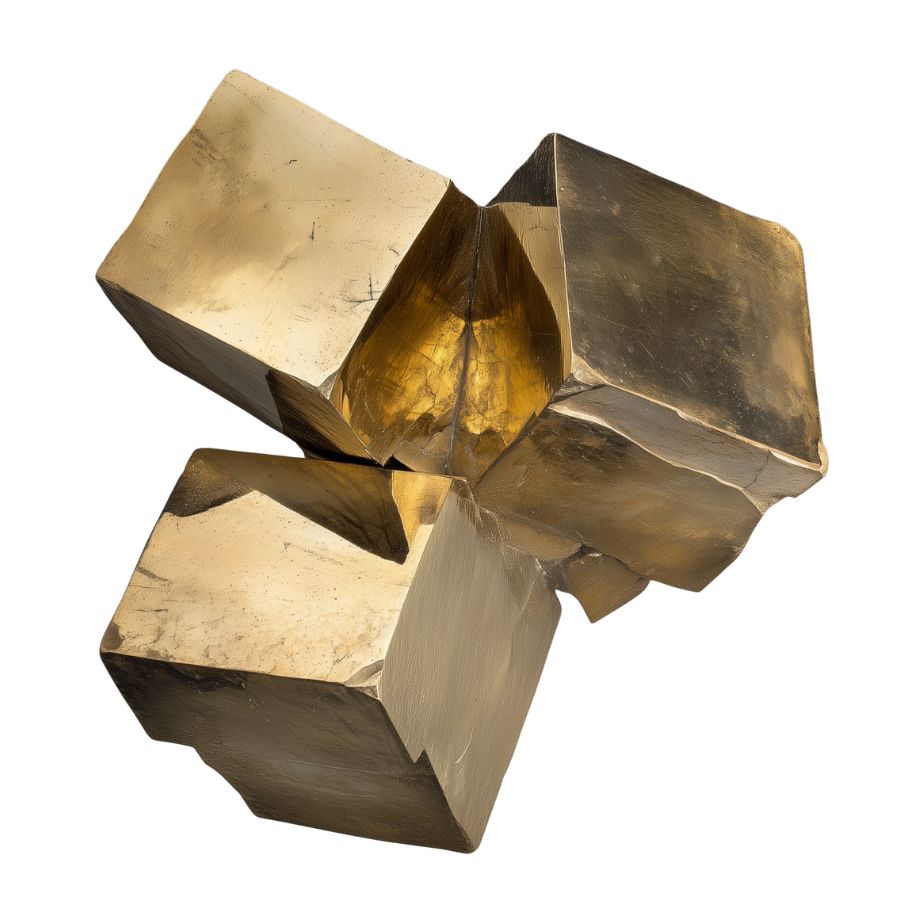
Navajún Pyrite forms perfect, sharp-edged cubes that seem almost man-made in their precision. These cubes have mirror-like surfaces. Their edges are remarkably crisp and well-defined.
The cubes can range from tiny specimens to impressive large crystals several inches across.
The conditions in Navajún have been optimal for millions of years, resulting in some of the largest and most intricate pyrite clusters found globally. The region’s geology allows for a high density of pyrite, with estimates reaching up to 100 kg per cubic meter.
A unique feature is the thin, soft coating that naturally preserves these crystals. This coating helps protect the sharp edges and brilliant surfaces from damage. When carefully removed, it reveals the pristine crystal faces underneath.
Octahedral Pyrite
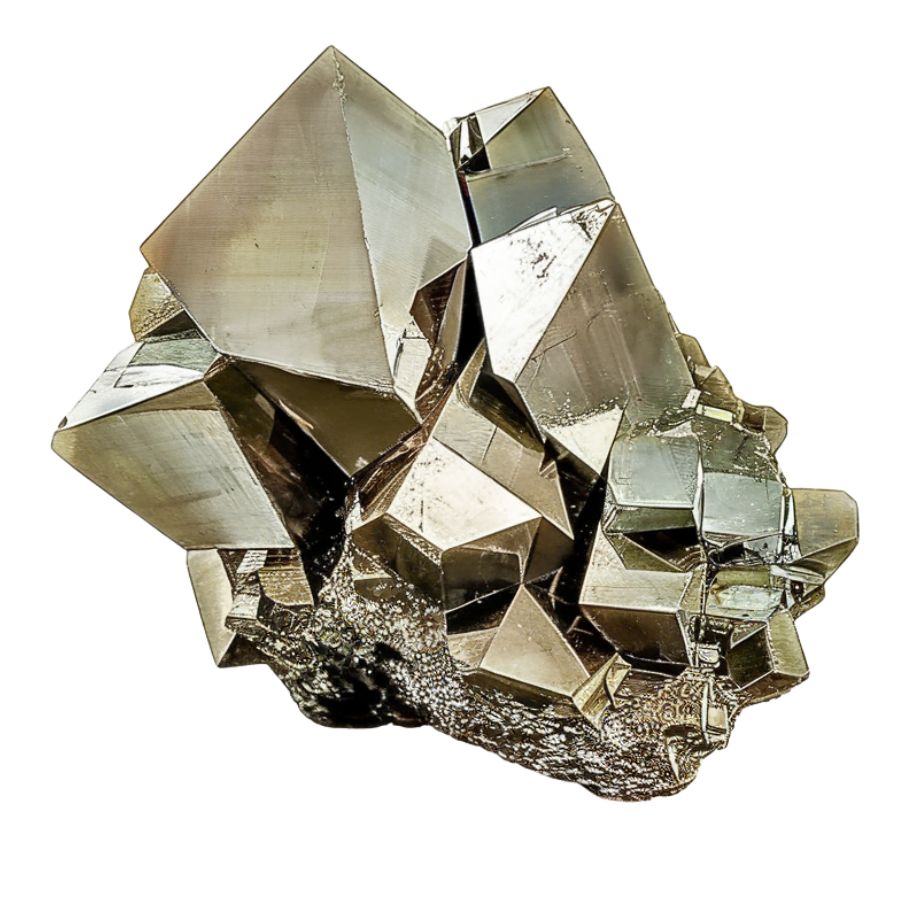
Octahedral pyrite crystals are characterized by their eight triangular faces, which belong to the {111} family of crystal facets. This octahedral form is less common than the cubic shape but is still prevalent in nature.
The faces of these crystals are typically smooth and free from the striations commonly seen on cubic pyrite.
They show a bright, metallic golden color that’s particularly striking when light hits the triangular surfaces. Some crystals develop interesting modifications where additional small faces appear at the edges or corners.
The formation of these octahedral crystals depends on specific growth conditions. Sometimes they combine with other crystal forms, creating more complex shapes that show both octahedral and cubic faces on the same specimen.
Striated Pyrite
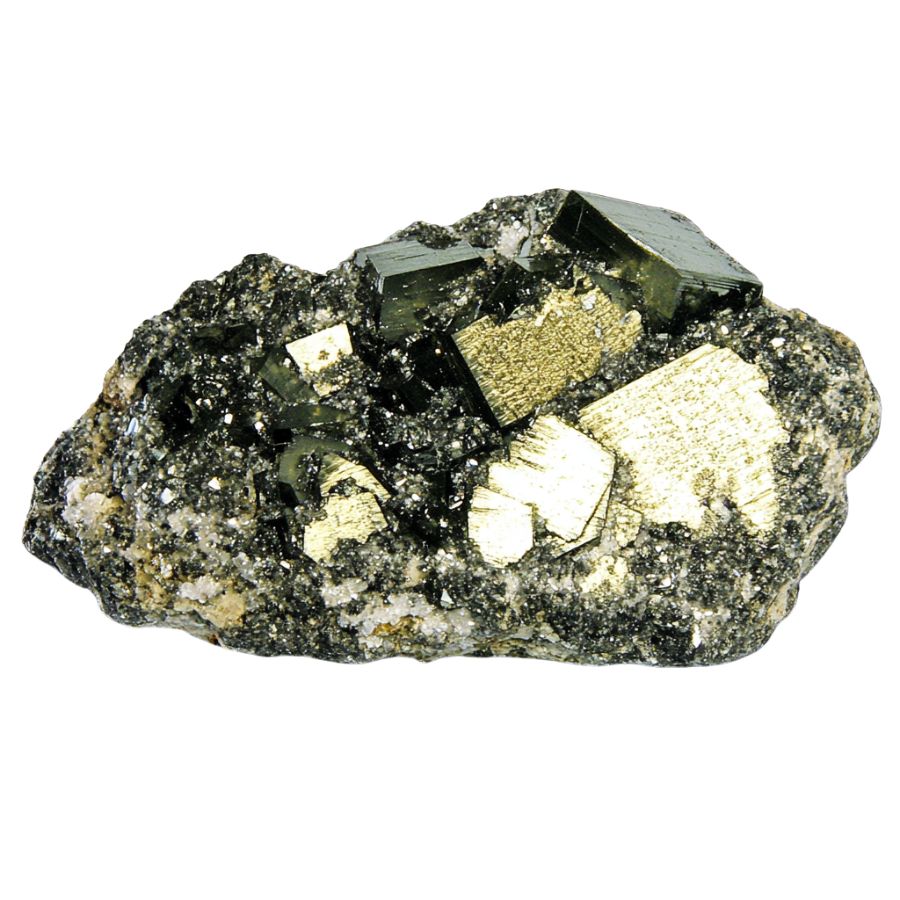
Striated Pyrite features distinctive parallel lines etched across its crystal faces. The lines can be fine and delicate or more pronounced, creating various surface patterns.
It typically forms in well-defined shapes, including cubic, octahedral, and pyritohedral forms.
The striations often run in specific directions on each crystal face. This creates an organized appearance, where the lines on adjacent faces meet at specific angles. The overall effect makes the crystal surface look like it’s been carefully engraved.
Some specimens show multiple sets of striations that cross each other, creating grid-like patterns. The depth and spacing of these lines vary between specimens. The striated surface maintains the crystal’s metallic golden color while adding visual complexity.
What Rough Pyrite Looks Like
Pyrite, often called “Fool’s Gold,” has some distinctive features that make it stand out. Here’s how you can spot rough pyrite even if you’re new to rocks and minerals.
Look for the Classic Brassy-Yellow Color
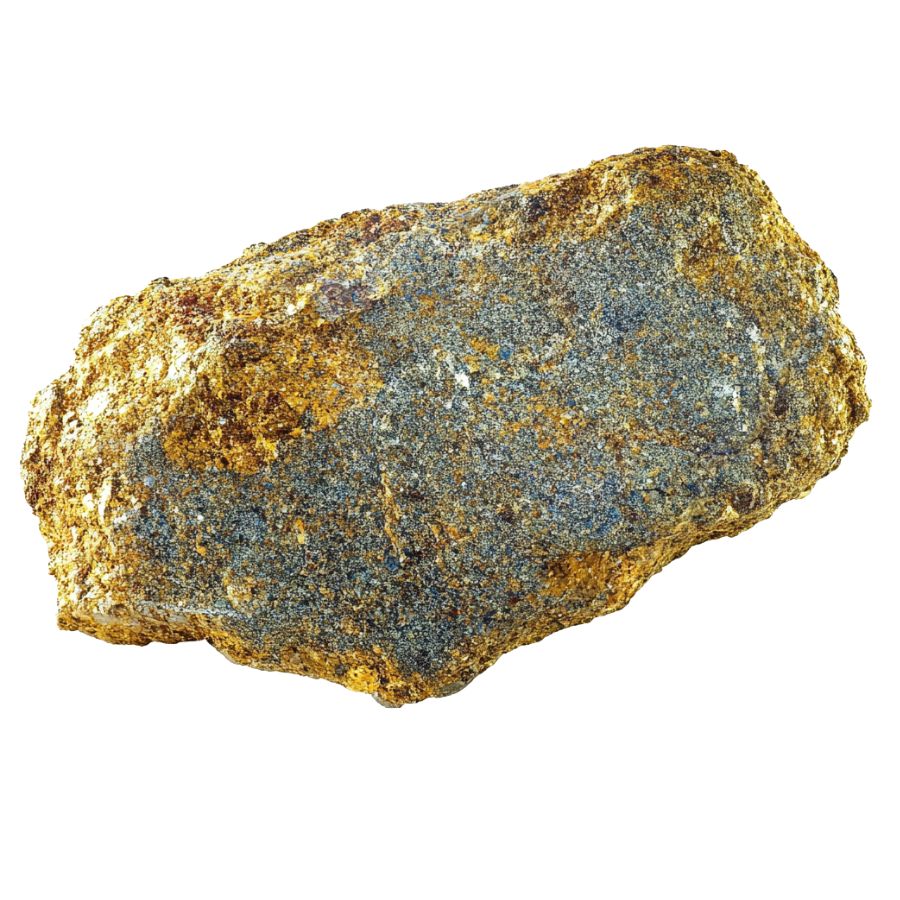
The most obvious giveaway is pyrite’s metallic, brassy-yellow color. But don’t be fooled by its gold-like appearance! Unlike real gold, pyrite has a more pale, silvery undertone.
If you tilt it under light, you’ll notice it’s less warm and rich than genuine gold. Sometimes, it might show tarnish spots with rainbow-like colors – that’s another clue you’re looking at pyrite.
Check the Crystal Structure
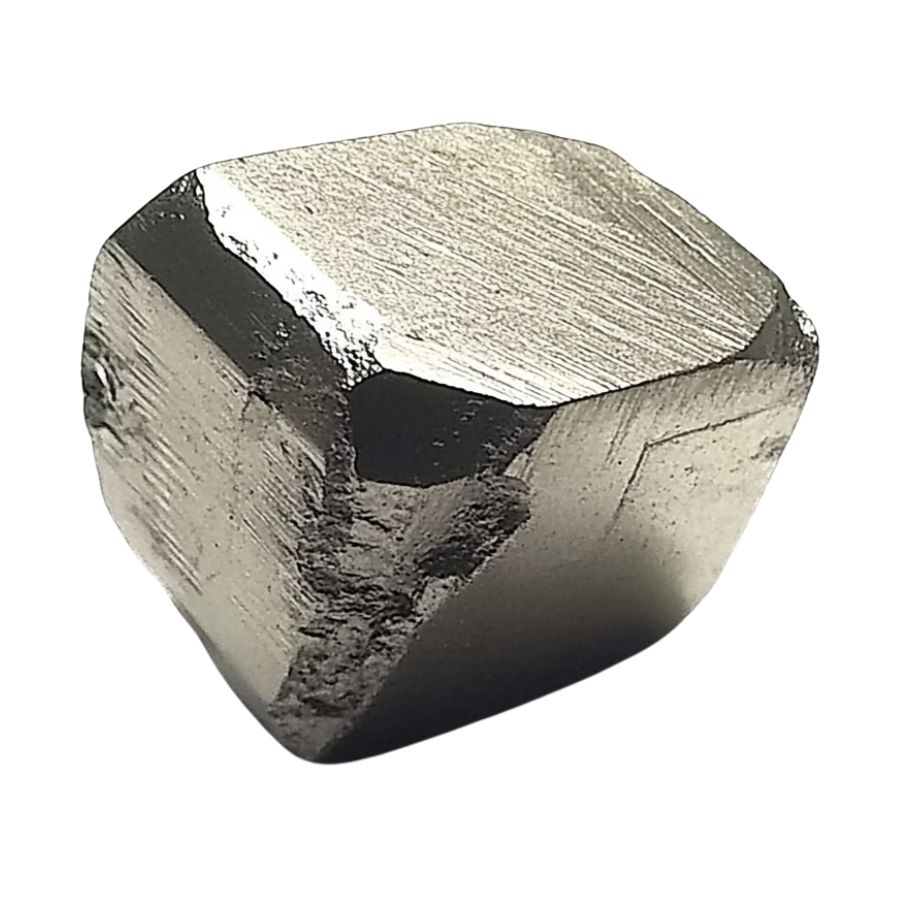
Raw pyrite typically forms in cubic or octahedral shapes – think dice-like cubes or eight-sided formations.
Even in rough chunks, you can spot these geometric patterns. Look for flat surfaces meeting at sharp angles.
Sometimes, you’ll see striations (parallel lines) on the crystal faces, which is super characteristic of pyrite. Gold never forms such crisp, angular shapes.
Test the Hardness and Brittleness

Here’s a cool trick: try scratching pyrite with a nail. Unlike soft gold, pyrite’s pretty hard (6-6.5 on Mohs scale) and will resist scratching.
It’s also brittle – if you manage to break a piece, it’ll have an uneven, jagged fracture. Gold, on the other hand, is soft and malleable, more likely to bend than break.
Examine the Surface Texture
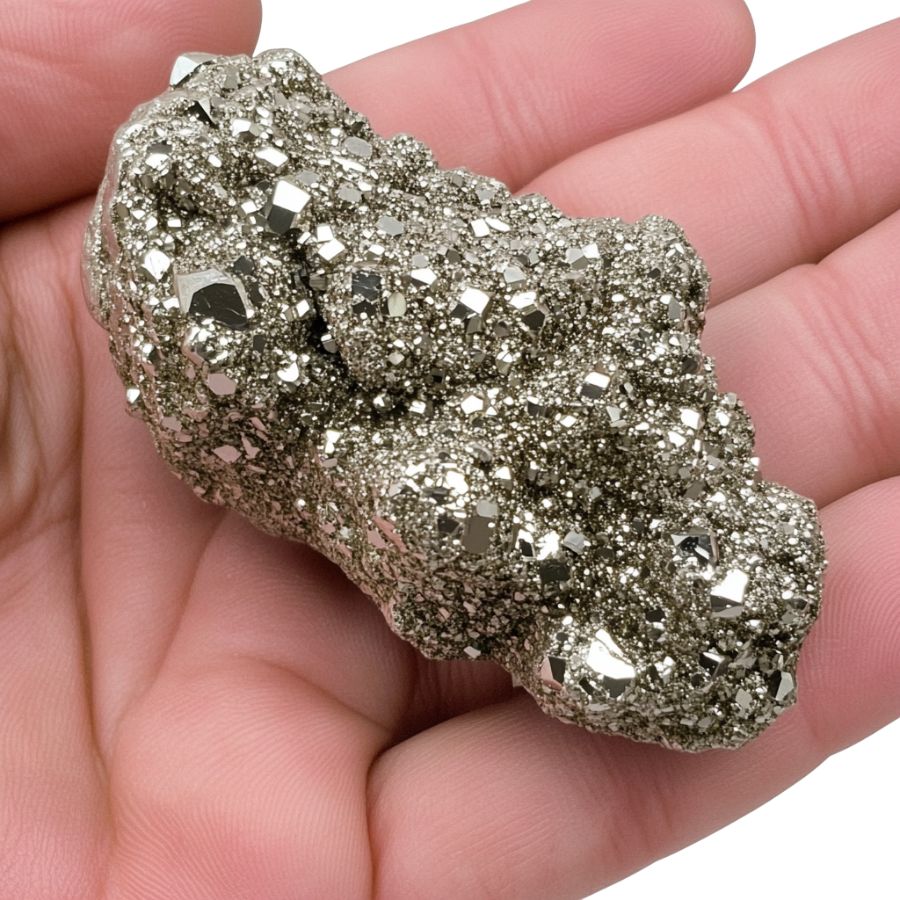
Run your fingers over rough pyrite. Feel those sharp edges and rough surfaces? That’s typical. Look for a surface that’s almost sparkly. Fresh breaks often reveal a bright, metallic luster.
Sometimes you’ll spot tiny crystal faces catching light from different angles – kind of like miniature mirrors reflecting sunlight.
A Quick Request About Collecting
Always Confirm Access and Collection Rules!
Before heading out to any of the locations on our list you need to confirm access requirements and collection rules for both public and private locations directly with the location. We haven’t personally verified every location and the access requirements and collection rules often change without notice.
Many of the locations we mention will not allow collecting but are still great places for those who love to find beautiful rocks and minerals in the wild without keeping them. We also can’t guarantee you will find anything in these locations since they are constantly changing.
Always get updated information directly from the source ahead of time to ensure responsible rockhounding. If you want even more current options it’s always a good idea to contact local rock and mineral clubs and groups
Tips on Where to Look
Pyrite is pretty common and can be found in many places. Here are some locations where you’re likely to spot these shiny golden cubes.
Sedimentary Rock Areas
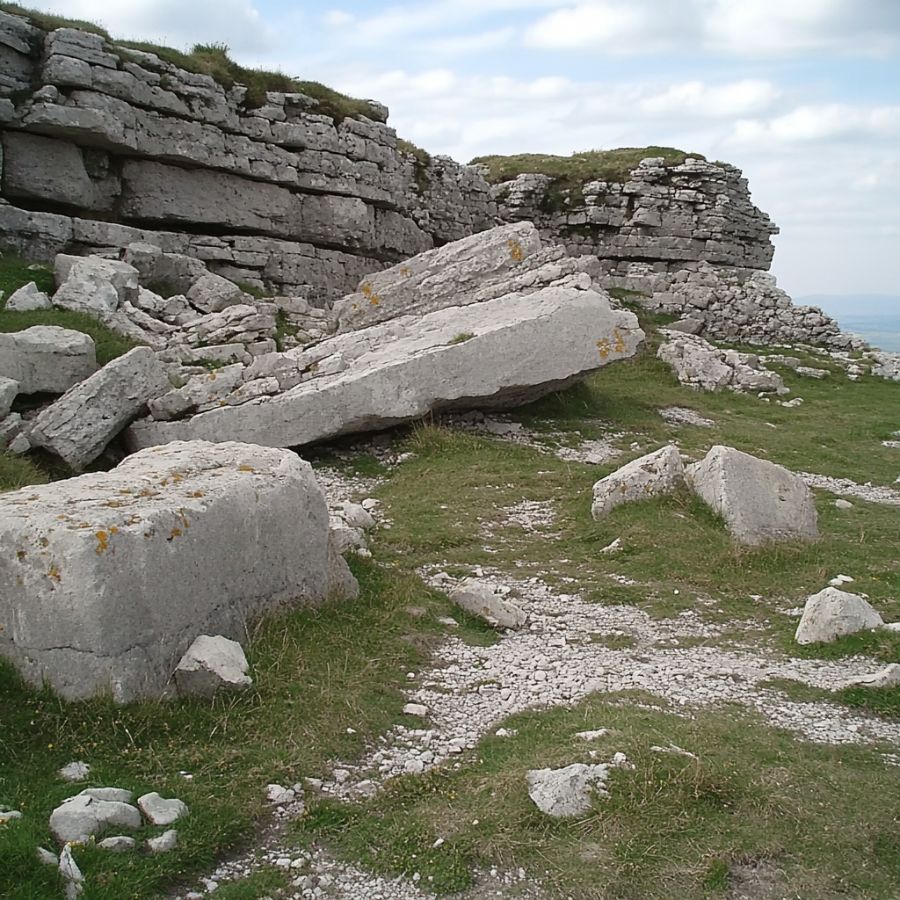
Look for dark shale or limestone outcrops. These rocks often have pyrite chunks embedded in them. Check cliff faces and road cuts where these rocks are exposed. The darker the sedimentary rock, the better your chances.
Sometimes, you’ll find perfect little cubes just sitting there in the rock matrix, waiting to be discovered after millions of years of formation in these ancient sea beds that have transformed into solid rock formations over time.
Old Mining Sites
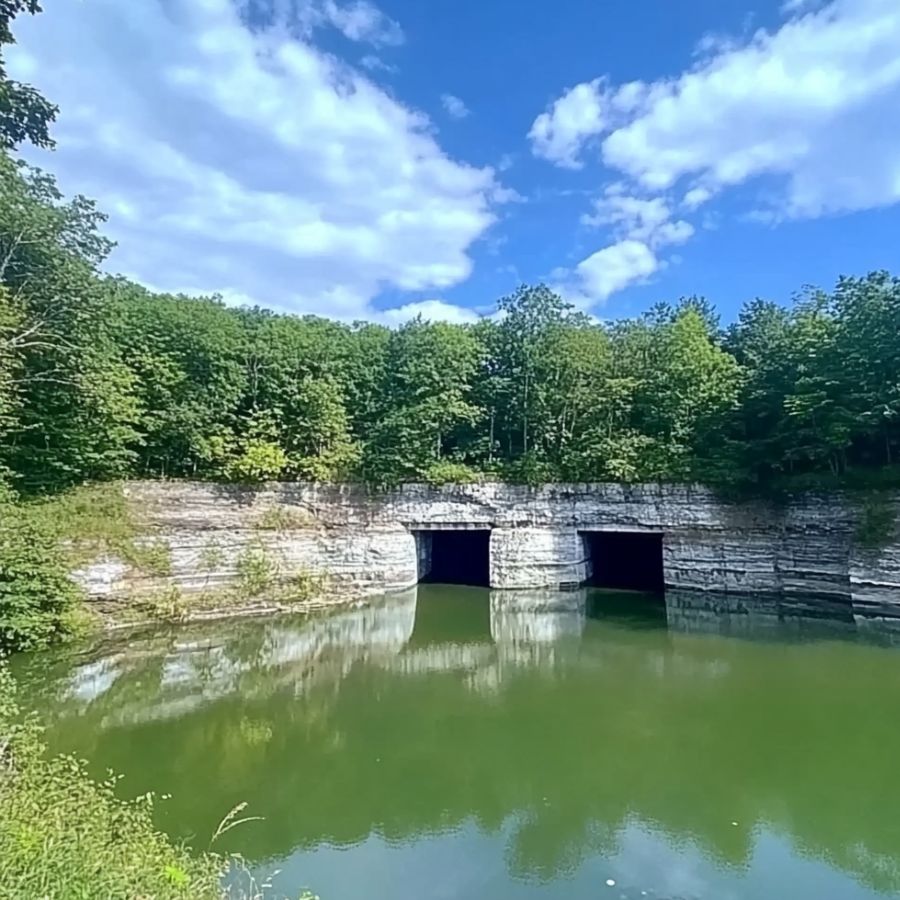
Search around abandoned quarries that are open to the public. Focus on areas where they mined coal or metal ores. Pyrite often shows up in mine dumps and tailings piles.
Look through the scattered rocks – pyrite’s metallic shine makes it easy to spot. Bring a spray bottle with water to wet rocks. Makes pyrite stand out better.
Stream Beds
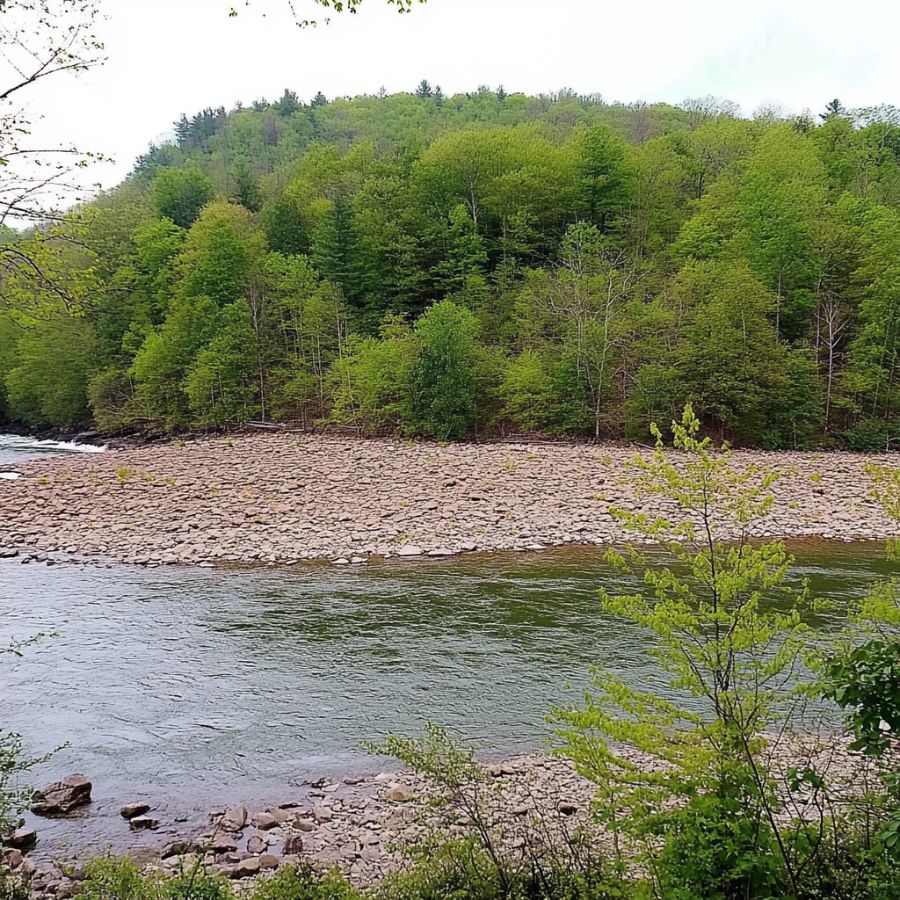
Check gravel bars in streams. Look where water slows down. Dark sand patches often contain tiny pyrite bits. Dig a few inches deep in stream gravels.
Use a gold pan – pyrite is heavy and sinks like gold. Best after rain when fresh material gets exposed.
Clay Banks
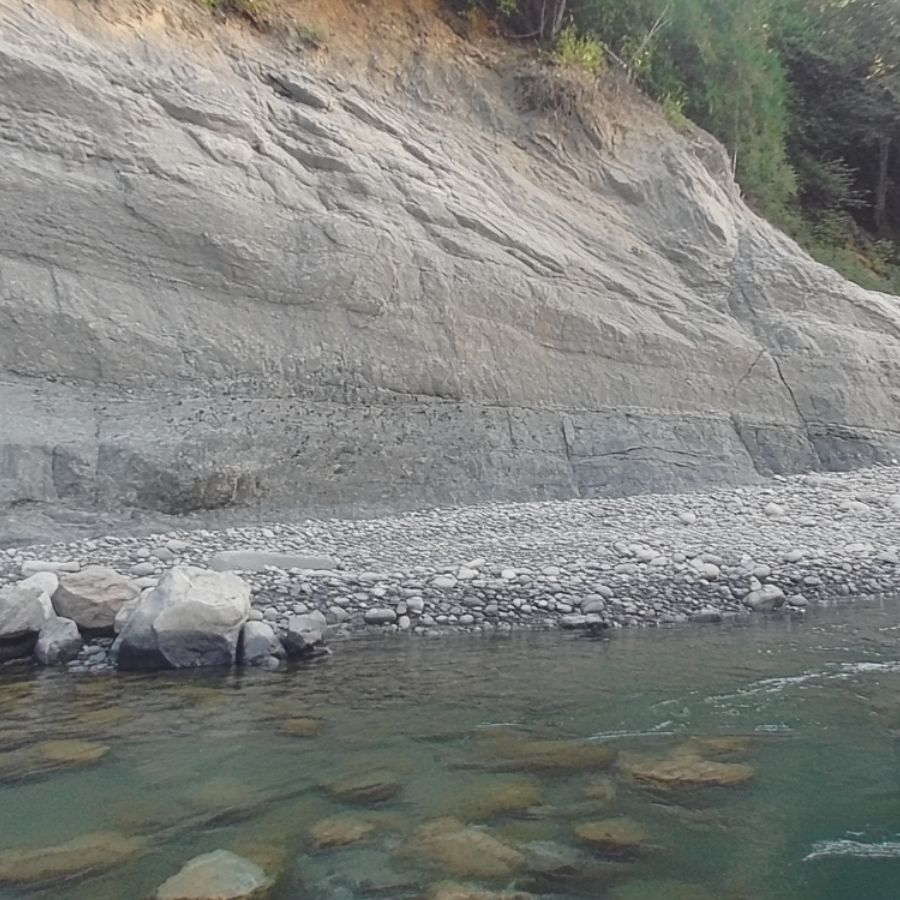
Hunt along eroded clay banks. Pyrite forms in clay deposits. Check areas where clay is gray or blue. Break open clay chunks – pyrite forms inside.
Look for rusty stains – good indicator. These spots often have pyrite crystals weathering out of the clay. Easier to spot on sunny days when crystals glitter.
Some Great Places To Start
Here are some of the better places in the state to start looking for Pyrite:
Always Confirm Access and Collection Rules!
Before heading out to any of the locations on our list you need to confirm access requirements and collection rules for both public and private locations directly with the location. We haven’t personally verified every location and the access requirements and collection rules often change without notice.
Many of the locations we mention will not allow collecting but are still great places for those who love to find beautiful rocks and minerals in the wild without keeping them. We also can’t guarantee you will find anything in these locations since they are constantly changing.
Always get updated information directly from the source ahead of time to ensure responsible rockhounding. If you want even more current options it’s always a good idea to contact local rock and mineral clubs and groups
Spring Creek
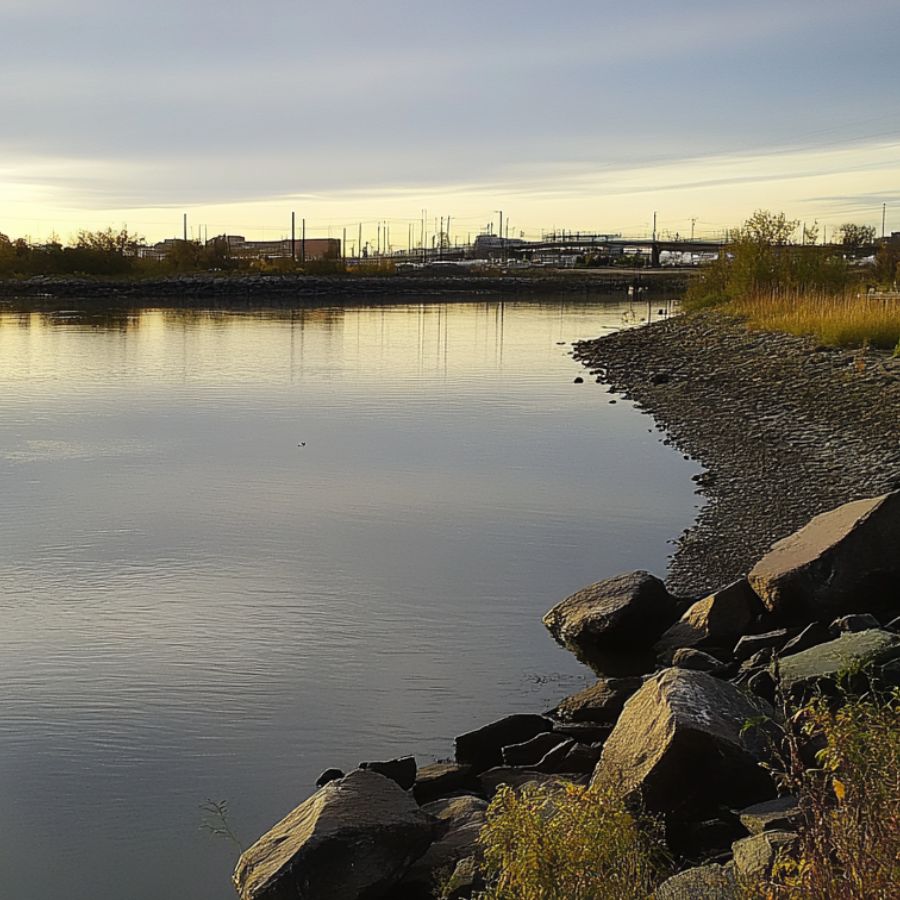
Spring Creek in Alden is a hidden gem for rockhounds looking to uncover pyrite. This area is known for its rich glacial deposits and sedimentary rock formations, which have trapped mineral specimens over time.
Pyrite, often found in nodules or crystalline clusters, appears in the creek bed and along exposed rock faces. After heavy rainfall, fresh deposits are sometimes revealed, making it an excellent time for searching.
It’s also good to explore gravel bars and areas where water has eroded the soil to increase your chances of discovering pyrite crystals.
St Johnsville Quarry
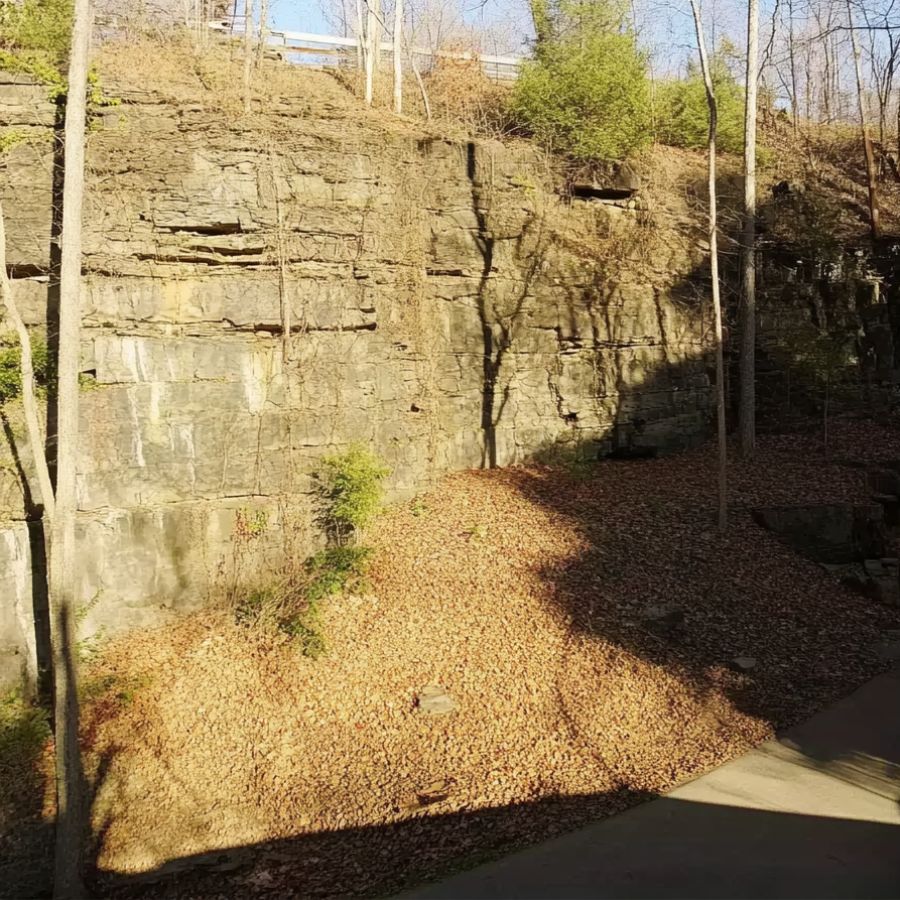
St Johnsville Quarry is a well-known rockhounding location in Montgomery County, offering a variety of mineral specimens, including pyrite. The quarry exposes layers of limestone and shale, where pyrite is often found in small cubic formations or as brassy flecks embedded in the rock.
The best way to search for pyrite here is by examining loose rock fragments near exposed quarry walls and breaking open promising pieces.
Besides pyrite, you might also come across fossils!
Port Washington

Port Washington is located in Nassau County on Long Island’s North Shore. This region was shaped by glacial activity, leaving behind layers of sediment and exposed rock formations.
Pyrite can sometimes be found embedded in the clay-rich soil and within gravel deposits along the shore. After storms, the shifting tides can reveal new mineral specimens, making coastal outcrops and eroded sections of land ideal spots to explore.
In addition to pyrite, you might also stumble across other minerals and fossils in the area.
Boston Mine
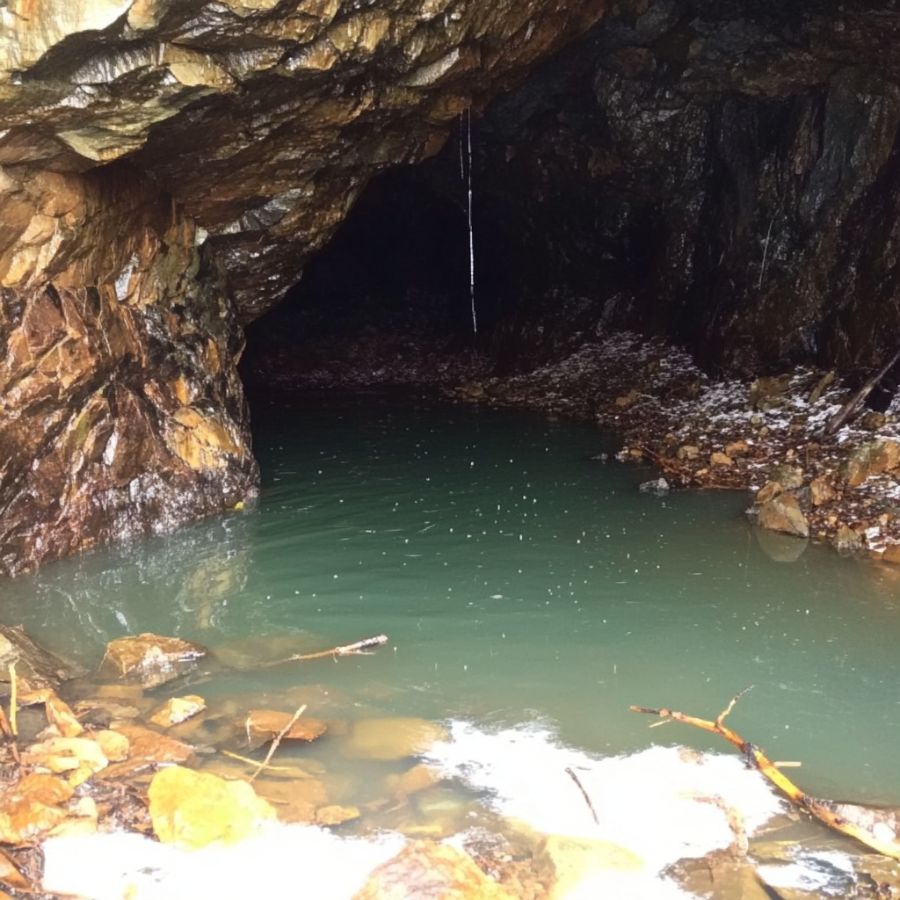
Boston Mine in Orange County is a historic mining site known for its iron-rich deposits and associated minerals, including Pyrite. The mine, once an active extraction site, has left behind a variety of mineralized rocks where Pyrite can still be found today.
Rockhounds searching for Pyrite should focus on old mine tailings and exposed rock surfaces, where cubic and crystalline formations may be visible. Because of the site’s possible safety concerns, visiting with a knowledgeable guide is advisable.
The area’s rugged terrain and deep mining history make it an intriguing location for both geology buffs and collectors.
Cascade Mountain
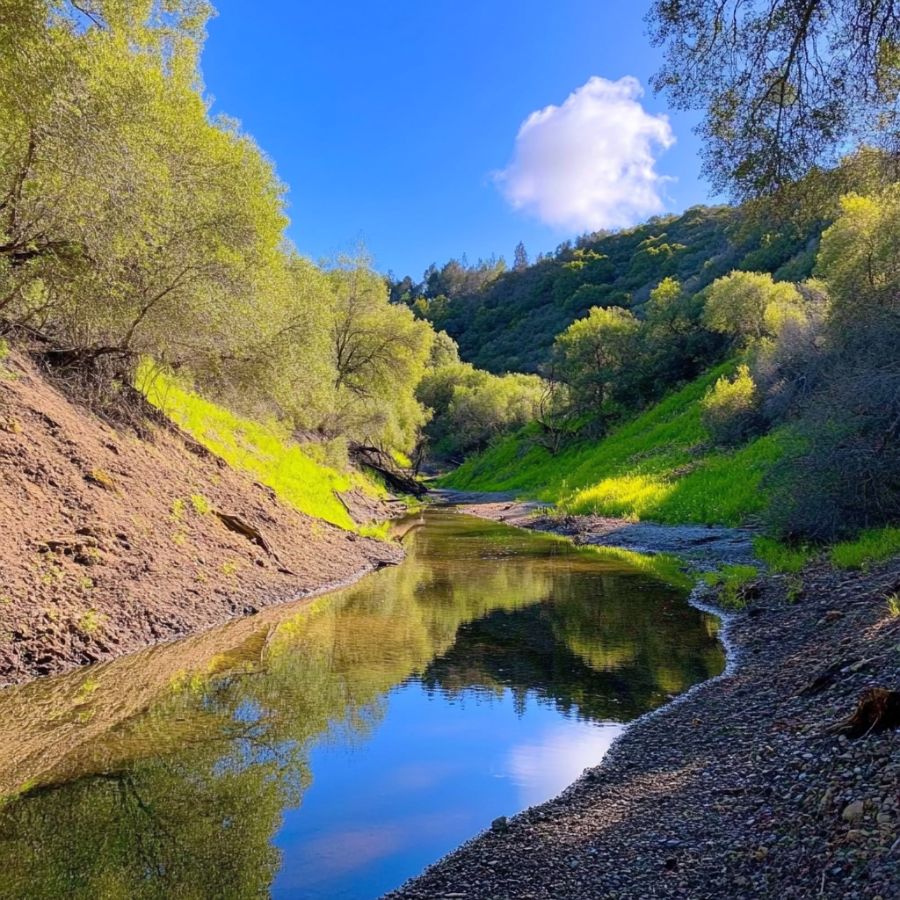
Cascade Mountain, located in Keene Township within the Adirondack High Peaks region, is known for its striking metamorphic rock formations. This mountain, composed mainly of schist and gneiss, occasionally contains deposits of pyrite within fractured rock surfaces.
The mineral often appears as metallic flecks within the surrounding stone, contrasting against the darker, weathered rock.
You might be able to spot pyrite shimmering in the sunlight along hiking trails and exposed rock faces.
Places Pyrite has been found by County
After discussing our top picks, we wanted to discuss the other places on our list. Below is a list of the additional locations along with a breakdown of each place by county.
| County | Location |
| Albany | Railroad cut at River Road, Glenmont |
| Albany | Indian Ladder |
| Clinton | Smith Graphite property, Clintonville |
| Clinton | Chateaugay iron mines, Lyon Mountain |
| Columbia | Austerlitz |
| Columbia | New Concord |
| Dutchess | Dutchess Quarry, Town of Pleasant Valley |
| Essex | Reed Mountain, Crown Point Center |
| Essex | Split Rock prospect, Westport |
| Essex | State Route 28N roadcut, Newcomb |
| Essex | McIntyre Mine, Town of Newcomb |
| Franklin | Cheney Pond deposit, Tupper Lake Village |
| Hamilton | State Route 30 locality, Town of Long Lake |
| Herkimer | Treasure Mountain Diamond Mine, Little Falls |
| Herkimer | Salisbury Corners, Town of Salisbury |
| Jefferson | Keene Mine, Antwerp |
| Jefferson | Frank Bent farm, Oxbow, Antwerp |
| Lewis | Martinsburg lead mines |
| Lewis | Port Leyden Mine, Port Leyden |
| Madison | Lake Oneida, Bridgeport-Lakeshore area |
| Madison | Chittenango Falls, Fenner Township |
| Monroe | Buffalo Road Quarry, North Gates |
| Monroe | Penfield Quarry, Penfield |
| Montgomery | Fonda, Mohawk Township |
| New York | 185th Street & Harlem Speedway, Manhattan |
| New York | 207th Street & Broadway, Manhattan |
| New York | Kingsbridge Road quarries, Manhattan |
| Queens | Water Tunnel #3, Woodside |
| Richmond | Kreischerville, Staten Island |
| Bronx | Eastchester |
| Niagara | Holcim Quarry, Lockport |
| Niagara | New Pekin Quarry, Lockport |
| Onondaga | Cicero clay pits, Cicero |
| Onondaga | Interstate highway 81 interchange, Cicero |
| Ontario | West Shore Outcrops, Canandaigua |
| Orange | Queensbury Forge |
| Orange | Tower Mine, Fort Montgomery |
| Orange | Rhein Property, Amity |
| Orange | Edenville |
| Oswego | Road Cut, Cherry Valley |
| Putnam | Tuckahoe and Patterson Marble Company Quarry |
| Putnam | Philips Mine |
| Putnam | Theall Mine |
| Rockland | Barnes Mine |

